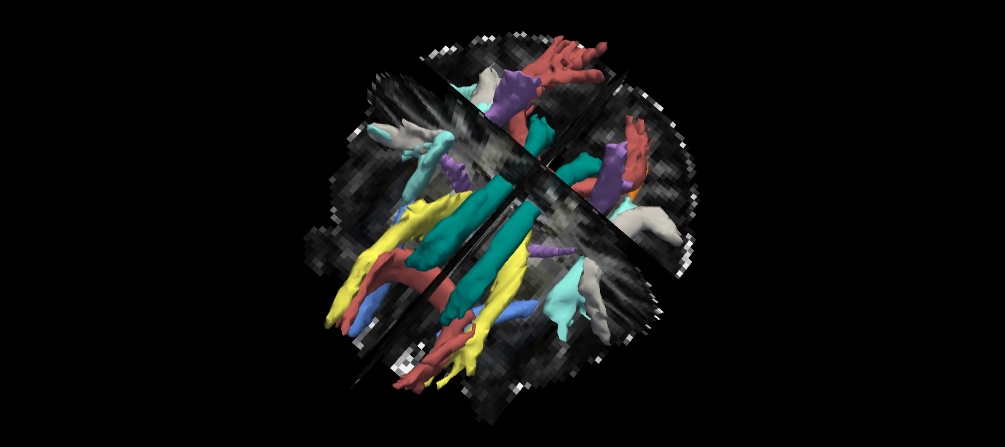| Deletions are marked like this. | Additions are marked like this. |
| Line 10: | Line 10: |
| * [[trac-all]]: This update for trac-all is recommended '''for all users.''' |
* [[ftp://surfer.nmr.mgh.harvard.edu/pub/dist/freesurfer/misc/allplatforms/trac- all|trac-all]]: This update for trac-all is recommended '''for all users.''' |
TRACULA: TRActs Constrained by UnderLying Anatomy
TRACULA is a tool for automatic reconstruction of a set of major white-matter pathways from diffusion-weighted MR images. It uses global probabilistic tractography with anatomical priors. Prior distributions on the neighboring anatomical structures of each pathway are derived from an atlas and combined with the FreeSurfer cortical parcellation and subcortical segmentation of the subject that is being analyzed to constrain the tractography solutions. This obviates the need for user interaction, e.g., to draw ROIs manually or to set thresholds on path angle and length, and thus automates the application of tractography to large datasets.

Updates
The following TRACULA updates have become available since the original release of FreeSurfer 5.1:
dmri_5.1_snow_leopard.tar.gz: TRACULA executables compiled on snow leopard. This build resolves memory issues that snow leopard users had with the original leopard build.
[[ftp://surfer.nmr.mgh.harvard.edu/pub/dist/freesurfer/misc/allplatforms/trac-
all|trac-all]]: This update for trac-all is recommended for all users.
Documentation
All preprocessing of the diffusion-weighted images and reconstruction of the pathways is done by the trac-all script. Several options for this analysis stream can be set by the user in a configuration file (dmrirc file), which is passed as an argument to trac-all. For more information, see:
trac-all usage (including description of all processing steps)
In summary the trac-all script can be used to:
- Preprocess the diffusion-weighted images, applying standard methods to mitigate image distortions due to eddy currents and B0 field inhomogeneities
- Register the individual's diffusion-weighted and anatomical images to each other and to a common (atlas) space
- Reconstruct volumetric distributions of 18 major white-matter pathways included in the atlas
- Extract statistics on standard diffusion measures (FA, MD, etc.) for each of the reconstructed pathways
Different command-line options allow the user to run all the above processing steps sequentially or only a single step.
The final output of TRACULA, the concatenation of the volumetric distributions of all reconstructed pathways, is a file called merged_*.mgz (the actual name depends on processing options). It can be visualized with freeview's -tv option, which displays the volumetric distributions of the pathways as isosurfaces like the ones shown in the image above.
Note that, because TRACULA relies on the underlying anatomy as derived from the FreeSurfer cortical parcellation and subcortical segmentation, these need to be generated before running trac-all. This means that before you run trac-all you will have to analyze your subjects' anatomical images with recon-all and make sure that they have a good-quality mri/aparc+aseg.mgz.
Tutorials
For step-by-step instructions on how to set up and run TRACULA, see the following tutorials from the FreeSurfer training workshop:
Related slide presentations from the workshop are available here:
Reference
Automated probabilistic reconstruction of white-matter pathways in health and disease using an atlas of the underlying anatomy. Yendiki A, Panneck P, Srinivasan P, Stevens A, Zöllei L, Augustinack J, Wang R, Salat D, Ehrlich S, Behrens T, Jbabdi S, Gollub R and Fischl B (2011). Front. Neuroinform. 5:23. doi: 10.3389/fninf.2011.00023
